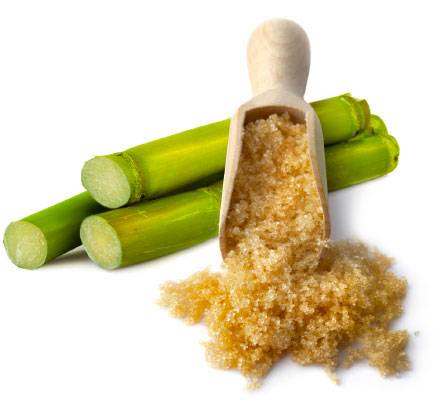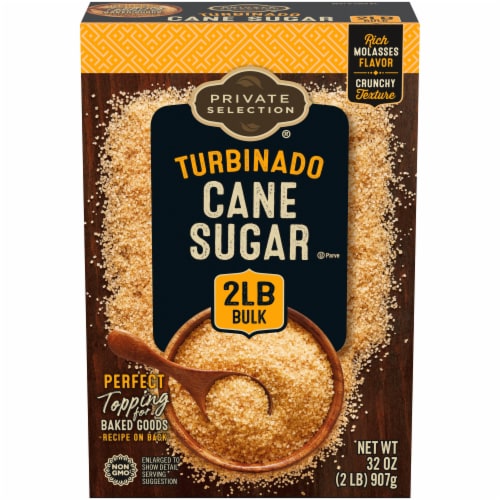Cane Sugar Processing: Innovative Techniques for Quality Production
An In-Depth Overview to the Ecological Impact and Sustainability Practices in Walking Stick Sugar Processing
The environmental impact of walking cane sugar processing provides a complex selection of difficulties that warrant careful assessment. From dirt destruction and extreme water usage to the carbon footprint associated with growing and production, the effects of standard methods are far-ranging. What particular techniques can be applied to strike an equilibrium in between productivity and ecological stewardship?
Introduction of Walking Cane Sugar Processing
Walking stick sugar processing entails a collection of methodical steps that change sugarcane right into polished sugar. At first, harvested sugarcane is transported to refining facilities, where it goes through cleansing to eliminate soil and debris. Following this, the cane is crushed to extract juice, which is after that clarified by eliminating impurities via heating and the addition of lime.
The clarified juice undertakes evaporation, where water is removed to concentrate the sugar material. This concentrated syrup is then taken shape via cooling, enabling sugar crystals to develop. These crystals are divided from the continuing to be syrup making use of centrifugation, resulting in raw sugar. To accomplish refined sugar, the raw product goes through more filtration procedures, which might include filtering system and washing to get rid of continuing to be impurities and color.
The end product is after that dried out and packaged for distribution. Throughout this entire procedure, maintaining performance and quality assurance is essential to make sure the sugar meets sector standards. Each step in walking cane sugar processing not just adds to the end product yet also has effects for resource use and waste generation, setting the stage for discussions on sustainability and environmental influences connected with sugar manufacturing.
Environmental Obstacles of Production
The manufacturing of walking cane sugar provides numerous considerable ecological challenges that warrant interest. One main concern is the substantial use agrochemicals, including chemicals and fertilizers, which can lead to soil deterioration, biodiversity loss, and contamination of regional water resources. The overflow from sugarcane areas often carries these chemicals into nearby communities, interfering with water life and impacting the health and wellness of neighborhoods reliant on these water bodies.
An additional difficulty is the high power usage connected with sugarcane processing. The boiling and refining phases call for considerable heat, largely produced by shedding nonrenewable fuel sources, contributing to greenhouse gas emissions. Furthermore, the large acreage required for sugarcane cultivation can lead to logging and environment damage, additional intensifying climate modification and harmful wild animals.
Additionally, the labor techniques in some areas elevate moral worries, as employees might encounter bad working problems and poor earnings. This scenario typically continues a cycle of poverty in local communities. Cane Sugar Processing. Attending to these environmental difficulties is important for establishing a lot more lasting methods in walking stick sugar manufacturing, eventually benefiting both the atmosphere and the neighborhoods associated with this industry
Water and Land Use Effect
Water sources and land use are essential components in the cane sugar market that significantly affect the atmosphere. The farming of sugarcane calls for significant water input, with quotes recommending that it can consume up to 2,000 litres of water per kg of sugar produced. This intensive use water frequently results in depletion of neighborhood water resources, influencing not just the sugarcane vineyards yet likewise bordering ecosystems and neighborhoods that count on the exact same water sources for farming and residential usage.

In addition, land usage for sugarcane cultivation can result in logging and the conversion of all-natural environments right into monoculture ranches. This technique reduces biodiversity, interrupts local environments, and adds to soil degradation. The growth of sugarcane fields typically encroaches on valuable farming land, producing competition for resources in between food and biofuel production.
Sustainable methods, such as optimizing irrigation techniques and carrying out plant turning, are necessary to mitigate these impacts. By embracing much more effective water use and land management methods, the walking cane sugar industry can reduce its ecological impact, guaranteeing a balance in between farming performance and environmental conservation.
Greenhouse Gas Emissions
Greenhouse gas emissions stand for a considerable ecological issue within the walking stick sugar processing market, especially check my blog as agricultural methods increase to meet international need. The farming of sugarcane, a plant that thrives in exotic climates, relies heavily on synthetic plant foods and chemicals, which add to nitrous oxide exhausts. In addition, land-use modifications, including deforestation for new sugarcane haciendas, release co2 stored in greenery and dirt.
Throughout handling, energy intake is another major resource of greenhouse gas exhausts - Cane Sugar Processing. Numerous sugar mills make use of nonrenewable fuel sources to power equipment and create warmth, causing considerable carbon footprints. Moreover, the transportation of raw sugarcane and finished products adds layers of exhausts with gas combustion in lorries
The cumulative result of these emissions intensifies environment change, positioning dangers not only to the environment however additionally to the lasting stability of the market. Stakeholders have to recognize the immediate need for detailed methods that address these discharges. This involves assessing present agricultural practices, refining methods, and transport systems to determine locations for improvement and mitigation. Addressing greenhouse gas discharges is crucial for fostering a much more lasting walking stick sugar market in a transforming climate.

Sustainable Practices and Innovations
Lasting techniques and technologies are significantly important in the cane sugar handling sector as stakeholders seek to minimize ecological effects while maintaining productivity. One considerable improvement is the execution of incorporated plant monitoring, which maximizes resource usage by combining dirt management, parasite control, and crop turning strategies. This method boosts yield while reducing chemical inputs and maintaining dirt health.
In addition, the adoption of sustainable power resources, such as biomass from sugarcane residues, has actually acquired grip - Cane Sugar Processing. By transforming waste products into power, processing facilities can reduce their reliance on fossil gas, therefore lowering greenhouse gas discharges
Water monitoring techniques have also seen improvements via the recycling and reusing of water in processing plants, substantially minimizing freshwater consumption. Technologies in technology, such as precision agriculture, enable farmers to keep an eye on crop health and wellness and resource usage a lot more efficiently, making certain lasting farming practices.
Additionally, accreditation programs like Fair Trade and Jungle Alliance encourage environmentally accountable farming methods and promote social equity within the supply chain. By accepting these sustainable techniques and advancements, the walking stick sugar handling sector can enhance its resilience and contribute positively to ecological stewardship.
Verdict
The ecological influence of walking cane sugar handling offers considerable difficulties, consisting of soil degradation, high water usage, and greenhouse gas discharges, along with ethical worries associated with labor methods. Resolving these concerns with lasting methods, such as incorporated crop monitoring, sustainable energy adoption, and YOURURL.com water recycling, is necessary. By advertising ecologically liable and socially fair techniques in sugar production, the industry best site can reduce its adverse impacts, making certain a more sustainable future for both ecological communities and areas associated with this industry.
Walking cane sugar processing involves a series of methodical actions that transform sugarcane into polished sugar. Each step in walking cane sugar handling not only contributes to the final item but additionally has implications for source use and waste generation, establishing the stage for conversations on sustainability and environmental effects associated with sugar production.
Greenhouse gas emissions stand for a significant ecological issue within the cane sugar handling industry, especially as farming methods expand to fulfill worldwide demand.Sustainable methods and technologies are significantly essential in the cane sugar processing industry as stakeholders seek to reduce ecological effects while maintaining performance.The environmental impact of walking stick sugar handling presents substantial challenges, consisting of soil degradation, high water usage, and greenhouse gas exhausts, along with ethical problems connected to labor methods.